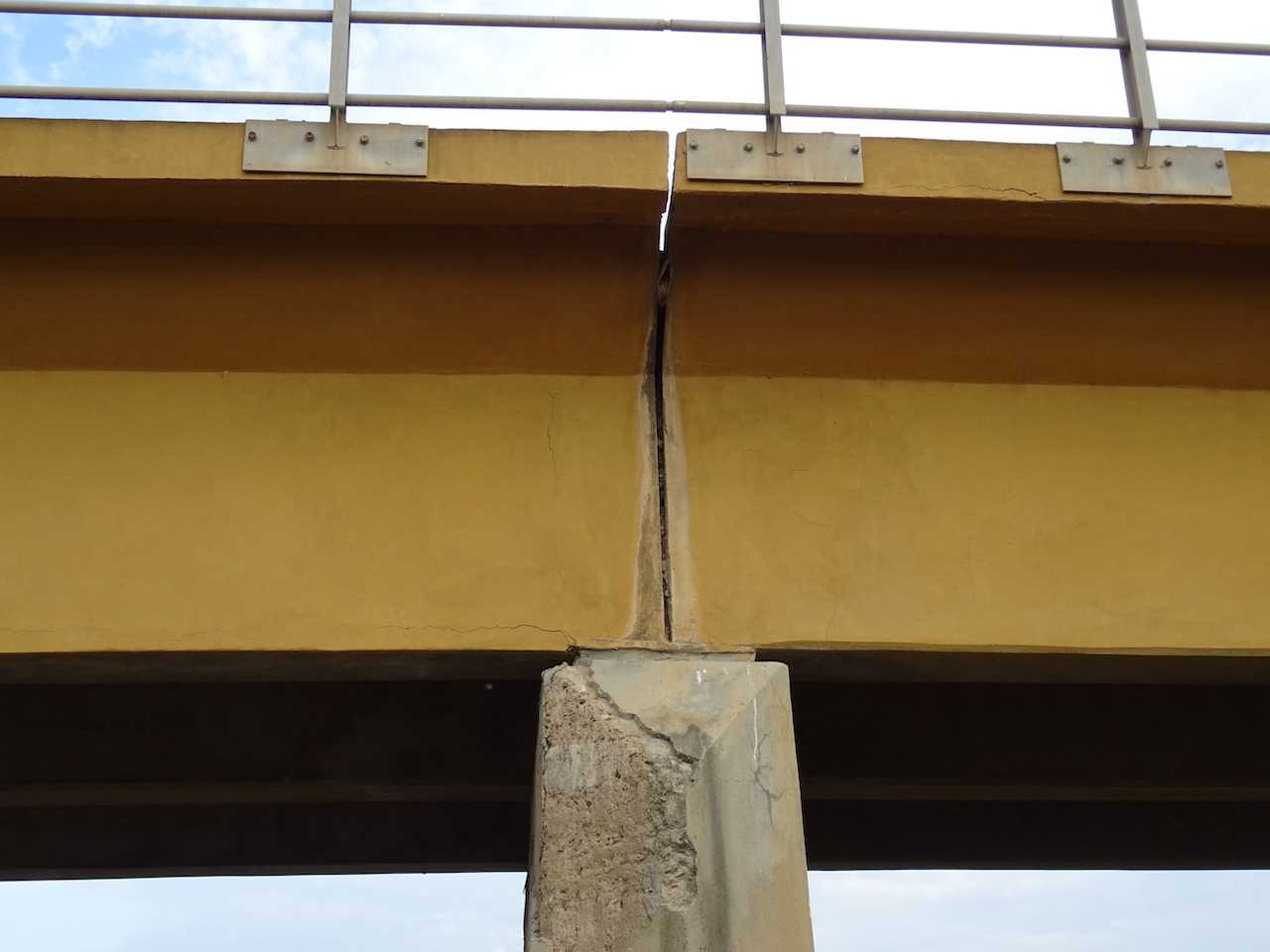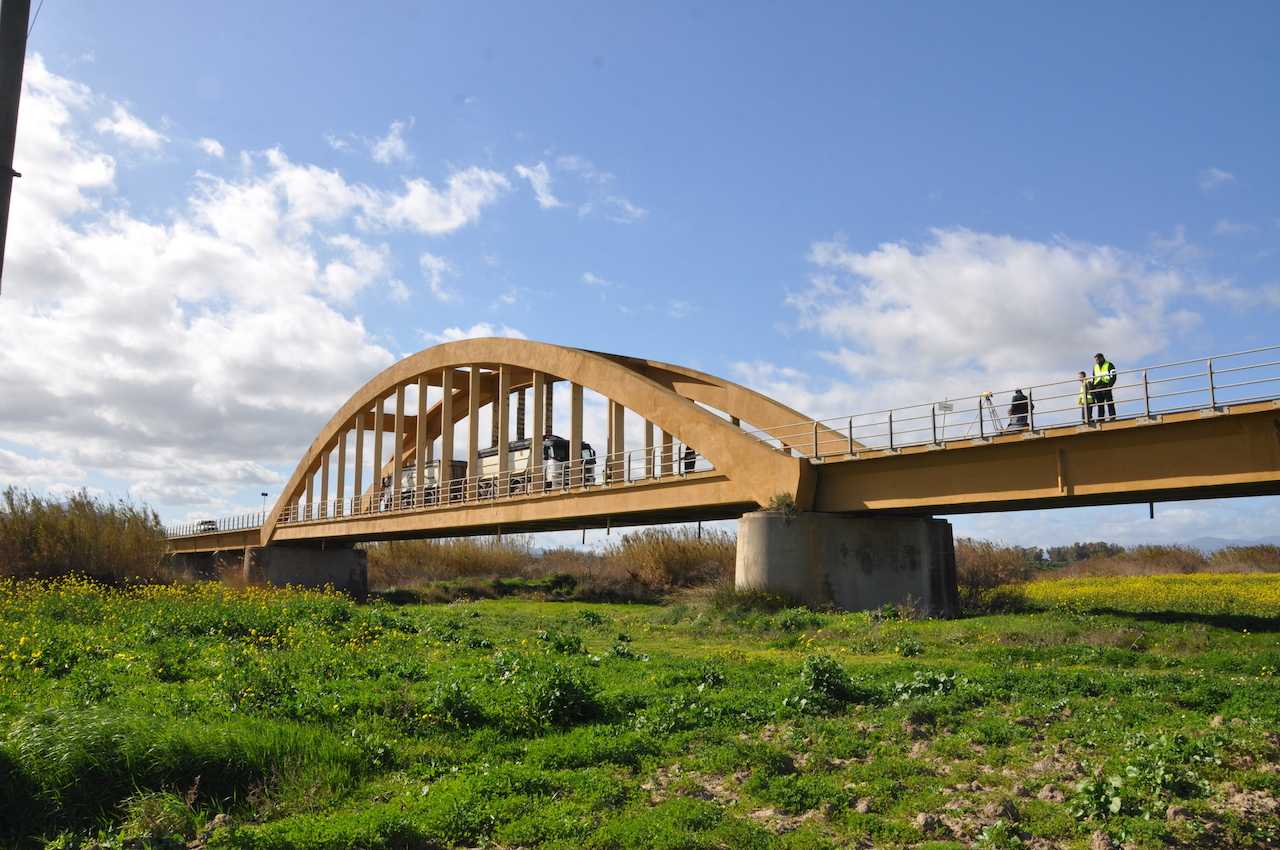Secured Solutions verified the consistency and safety of the twin bridges over the Rio Mannu and Rio Cixerri, anticipating subsequent restoration work.

The structure, made of in-situ cast reinforced concrete, comprises two side-by-side arches, joined at the base by a deck, covering a structural span of approximately 55 m, over which a 5 m wide roadway is developed. These are two ‘tie-rod arch’ bridges, a construction type that in the past was very fortunate because it allowed considerable spans to be bridged when the distance between the bridge intrados and the ground below was too small to allow the arches to develop.
However, this structure poses a problem: the containment of the sagging of the deck of the arches. For this reason, the bridges were built by rigidly connecting the arches with transversal elements and transforming the uprights, which, with modular pitch, subdivide the circular sector drawn by the arches into rigid blades embedded in the base. This solution, however, requires the deck to have good torsion and bending resistance. This objective was achieved in both cases by constructing the deck with a coffered structure consisting of two longitudinal beams and a central spine beam, joined by transverse elements and completed at the top by a reinforced slab.

In compliance with the procedures established by the Technical Standards for Constructions (NTC), now Ministerial Decree 17.01.2018, given the operational difficulties and the lack of the original structural design, an extensive testing campaign was carried out, which allowed for the three-dimensional survey of the bridges with the 3D laser scanner, the mapping of the reinforcements through the pacometric test, and the assessment of the actual elastic-deformational capacities of the structural elements with a static load test. The visual investigation also allowed the evaluation of the state of degradation, highlighting the presence of oxidation phenomena of some reinforcement bars due to insufficient cover and consequent expulsion.
The data obtained from the investigations were used to implement the calculation model, which was performed using the finite element software MIDAS GEN, modelling the structure according to its three-dimensional behaviour with the semi-probabilistic limit state method. The execution of an experimental dynamic investigation of the OMA (Operation Modal Analysis) type also made it possible to identify the structure’s accelerations and relative natural vibration frequencies. It allowed the finite element method (FEM) to be calibrated and validated, thanks to the comparison between the theoretical frequencies obtained from the calculation software and those measured in situ. The maximum deviation detected is less than 7%, which attests to the high precision of the results obtained.

The combined results of the structural investigations and analytical verifications showed that the bridges are still statically suitable to carry the working loads set by the regulations by a wide margin. However, to prolong their useful life, restoration work on the deteriorated parts was planned during the design phase, consisting of deep removal of the concrete, restoration and anti-corrosion treatment of the reinforcement and finally, the subsequent volumetric reconstruction of the section using structural mortars.






























